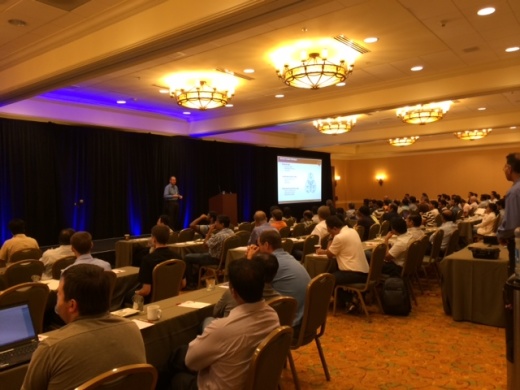Preparing for the Perfect Storm with New-School Verification Techniques
Between 2006 and 2014, the average number of IPs integrated into an advanced SoC increased from about 30 to over 120. In the same period, the average number of embedded processors found in an advanced SoC increased from one to as many as 20. However, increased design size is only one dimension of the growing verification complexity challenge. Beyond this growing-functionality phenomenon are new layers of requirements that must be verified. Many of these verification requirements did not exist ten years ago, such as multiple asynchronous clock domains, interacting power domains, security domains, and complex HW/SW dependencies. Add all these challenges together, and you have the perfect storm brewing.
It’s not just the challenges in design and verification that have been changing, of course. New technologies have been developed to address emerging verification challenges. For example, new automated ways of applying formal verification have been developed that allow non-Formal experts to take advantage of the significant benefits of formal verification. New technology for stimulus generation have also been developed that allow verification engineers to develop complex stimulus scenarios 10x more efficiently than with directed tests and execute those tests 10x more efficiently than with pure-random generation.
It’s not just technology, of course. Along with new technologies, new methodologies are needed to make adoption of new technologies efficient and repeatable. The UVM is one example of these new methodologies that make it easier to build complex and modular testbench environments by enabling reuse – both of verification components and knowledge.
The Verification Academy website provides great resources for learning about new technologies and methodologies that make verification more effective and efficient. This year, we tried something new and took Verification Academy on the road with live events in Austin, Santa Clara, and Denver. It was great to see so many verification engineers and managers attending to learn about new verification techniques and share their experiences applying these techniques with their colleagues.
If you weren’t able to attend one of the live events – or if you did attend and really want to see a particular session again – you’re in luck. The presentations from the Verification Academy Live seminars are now available on the Verification Academy site:
- Navigating the Perfect Storm: New School Verification Solutions
- New School Coverage Closure
- New School Connectivity Checking
- New School Stimulus Generation Techniques
- New School Thinking for Fast and Efficient Verification using EZ-VIP
- Verification and Debug: Old School Meets New School
- New Low Power Verification Techniques
- Establishing a company-wide verification reuse library with UVM
- Full SoC Emulation from Device Drivers to Peripheral Interfaces
You can find all the sessions via the following link:
https://verificationacademy.com/seminars/academy-live




Comments